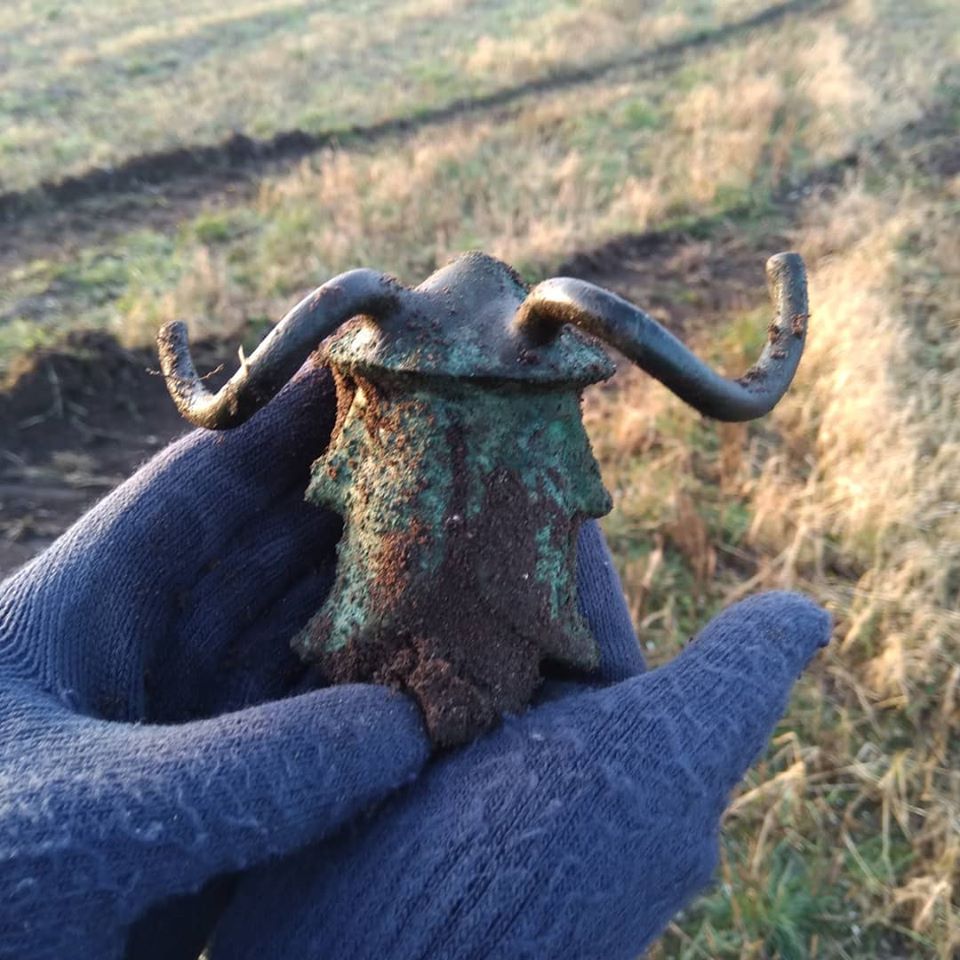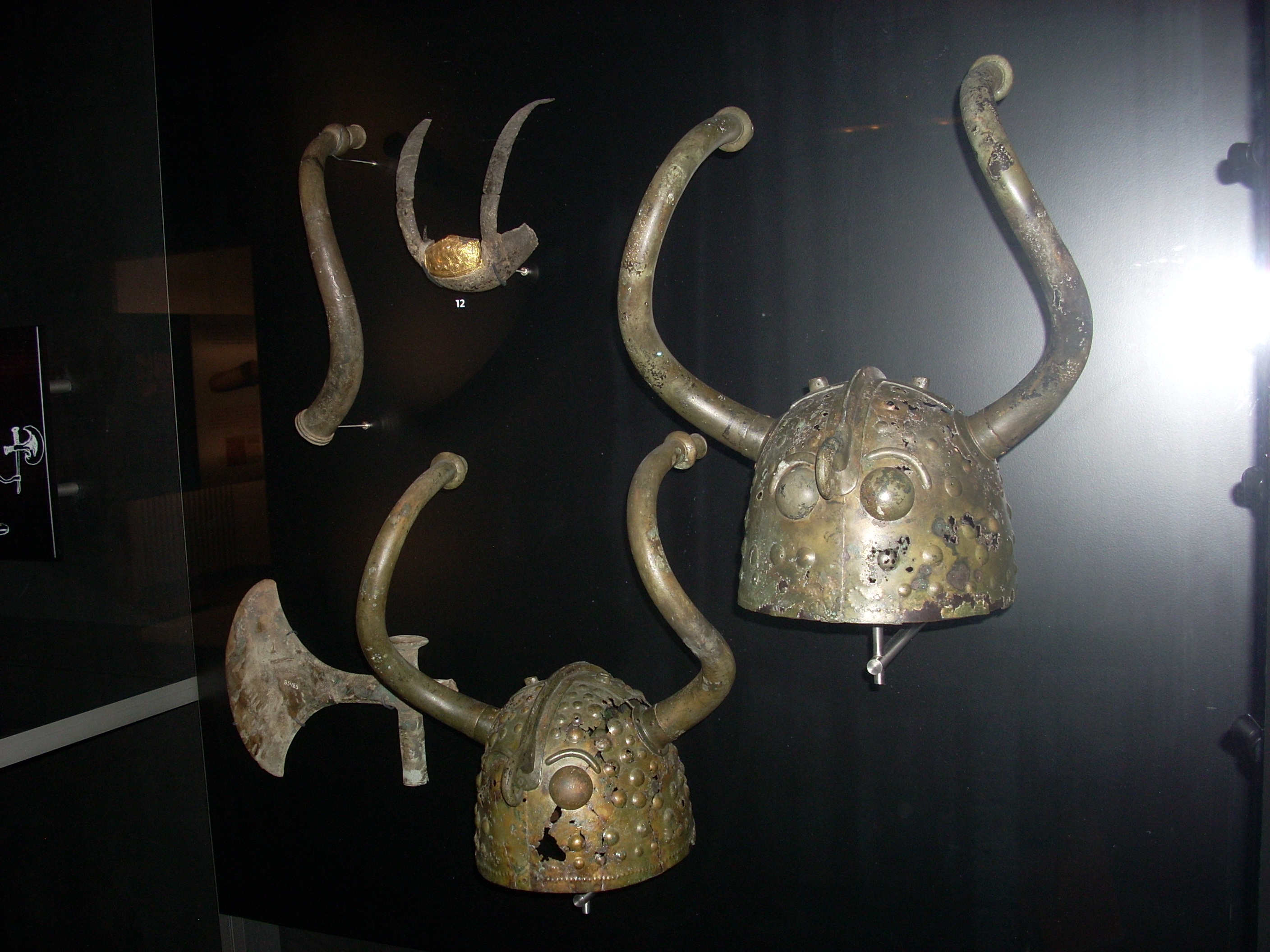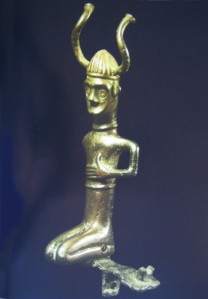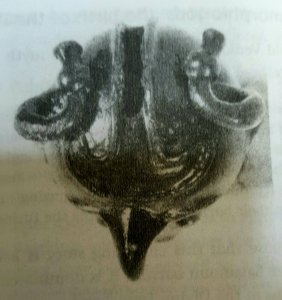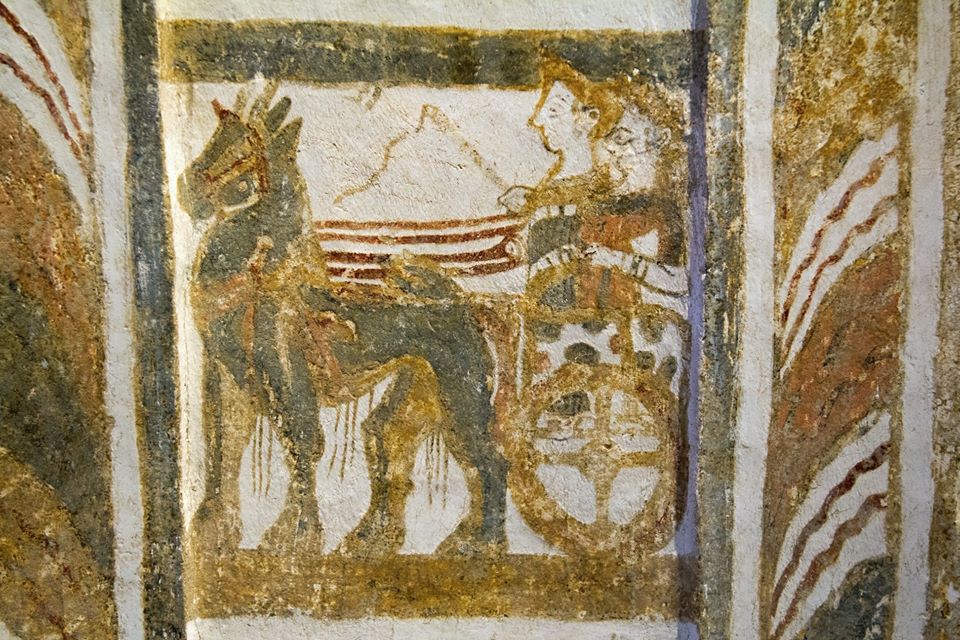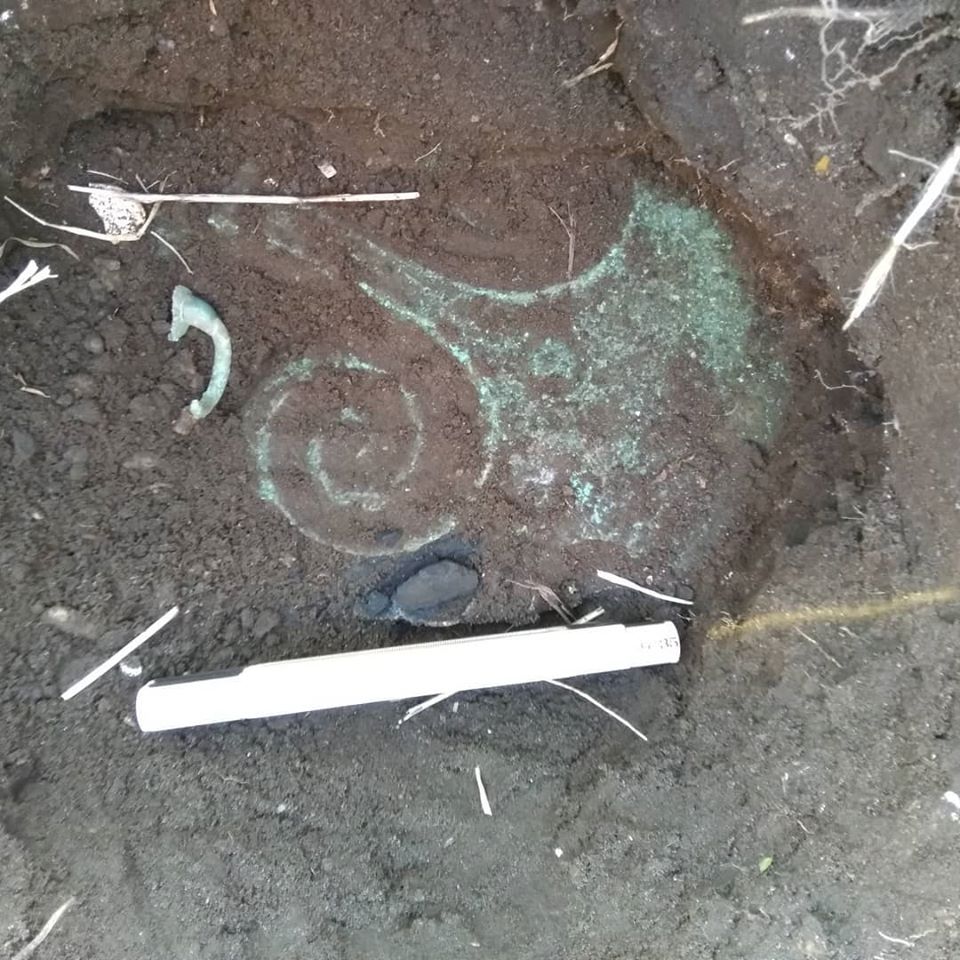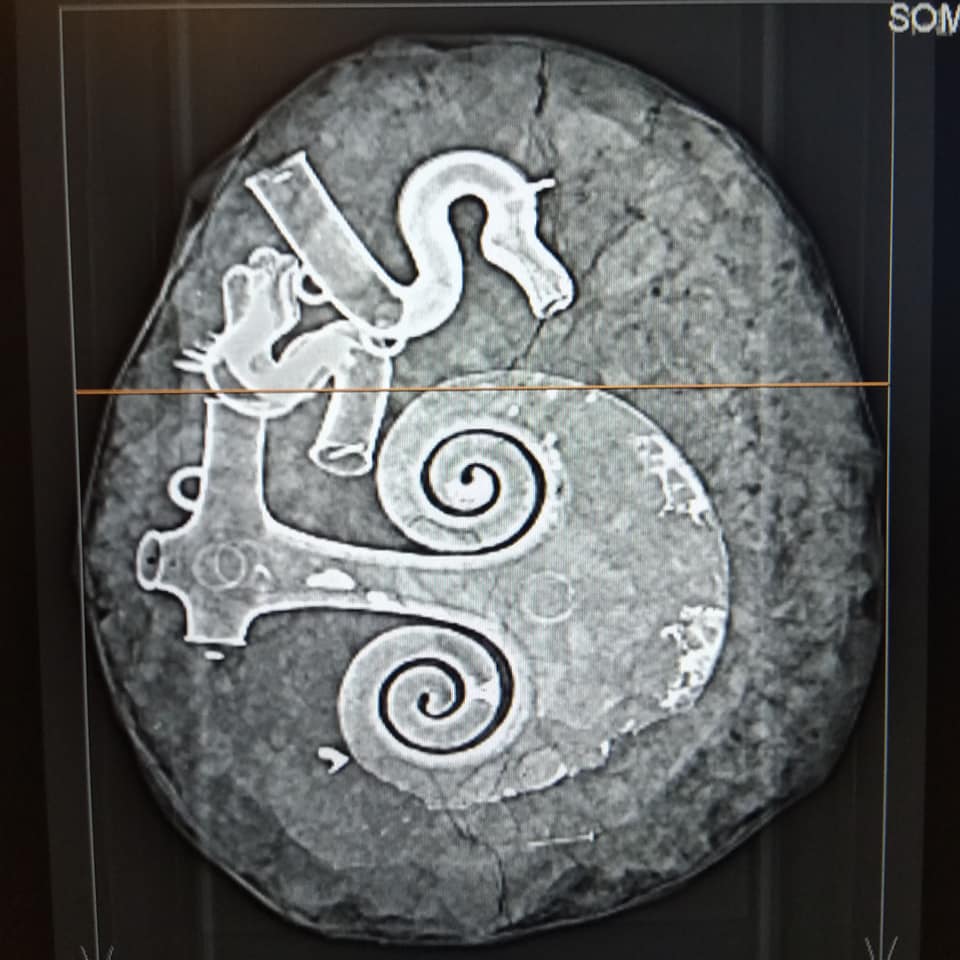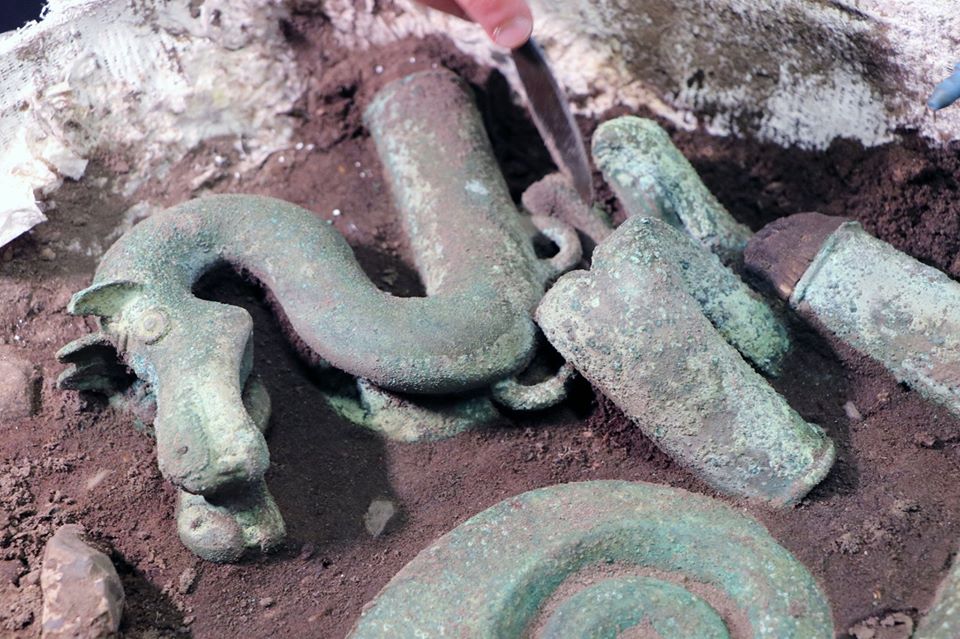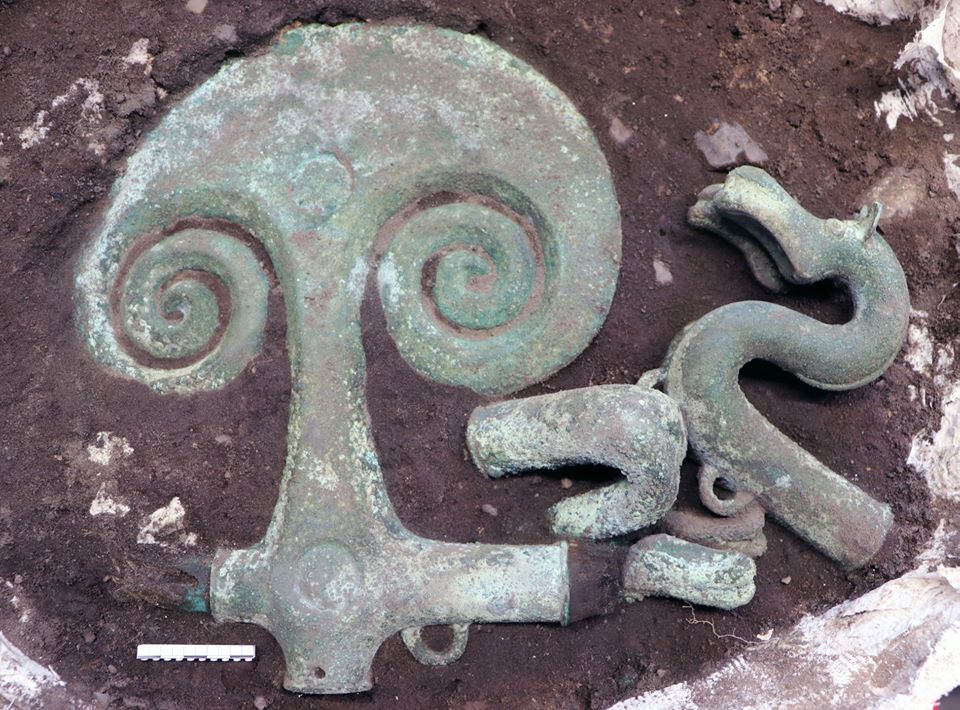Over the past couple of decades or so I have increasingly stressed the importance of ancestral continuity and the, one might say blindingly self-evident reality that our folk did not cease to be with the conversion of the last king and the introduction of the diluting influence of “the Church”. Those first generation Christians are as much a part of our ancestry and ancestral legacy, indeed, as much a part of our identity, as the last generation among the parents or grandparents of us modern day Anglo-Nordic Heathens; ancestry and kin being a biological reality and not at all the social construct that many modern heathens, even on the Folkish side ironically enough, insist that it is.
Those historical Christians are our ancestors. They are not another tribe or folk. And their stories, both collectively and individually, are just as relevant to us, as modern folk of Anglo-Nordic belief, as those of the Icelandic sagas; which themselves are stories about the cultural “neighbours” of our personal ancestors and kin and as such offer “more branches than roots” and leave those aspects of the folk soul, those closest to us as individuals, dormant and un-nourished.
As a Canadian myself, the stories of the arrival of my ancestors, both personal and collective, and their deeds in the “New World” are every bit as important, from the standpoint of Anglo-Nordic belief in the New World, as the arrival of the Anglo-Saxons or Danes in Britannia over 1300 years ago, or, for the person of Icelandic ancestry, the arrival of the Norse in Iceland. And speaking as someone who long ago settled with the broad brushstrokes of ethno-cultural identity, as, at worst, where even the descendants of kings ultimately find themselves, I must admit that the knowledge of self gained via personal ancestry and lines of descent is palpable… stirring aspects of the soul one might not even known were there until actually quickened.
Such was my experience in the wake of Allhallowstide 2019 anyway; having scrolled by a Ancestry.ca advertisement offering free access to military records leading into Memorial Day and deciding to check it out to see if I might be able to find something on my long lost father. It’s nothing that I haven’t done before on the internet, engaging in casual, whimsical searches for information on my father. And so I was actually quite surprised when, low and behold, I actually found something this time around! And this led to touching base with my father’s first wife, and then his younger brother, and finally to connecting with my half-sister (from his third wife).
Moreover, it really opened up my knowledge of personal ancestry, and gave me a much better appreciation of my history as a Canadian
As for his patrilineal heritage, that is, the direct Martin line, it runs back to my great-great-great-great grandfather, James Martin, who was born in 1777, some two years into the American Revolutionary War, and seems to have grown up in the state of Delaware; which itself had barely signed off on its own declaration of independence, which had a strong and active Loyalist population, and which was largely under British control from 1777 to the end of the war in 1783. He arrived in the township of Thurlow, in the Mecklenberg District of the British held “Province of Quebec”, in 1790 when the township was receiving its first wave of “United Empire Loyalist” and other “Late Loyalist” pioneers; the distinction between the two being, those had had declared their loyalty to the Crown prior to the end of the American Revolutionary War in 1783, and those who demonstrated their loyalty… some time thereafter.
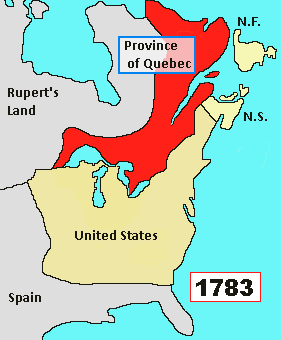 Exactly what prompted James’ removal from Delaware — or wherever else he might have hailed from — to Thurlow is anyone’s best guess. The division between Loyalists and Patriots, all more or less of the same stock, with much the same cultural values, sensibilities, idiosyncrasies, and expectations, is often over-stated by politicians and their historians and teachers, and while gross abuses certainly took place, here and there, and were perpetrated on both sides, no sooner had the war ended then those whimsical ideological “divisions” melted away and the old familial and cultural bonds reasserted themselves. Bonds that continue to exist even into the present day, and are the reason why, despite wars (1812) and raids (Fenian), the Canadian-American border has still managed to remain the worlds longest unprotected border; though present circumstances are, and quite rightly, challenging the nature of that border.
Exactly what prompted James’ removal from Delaware — or wherever else he might have hailed from — to Thurlow is anyone’s best guess. The division between Loyalists and Patriots, all more or less of the same stock, with much the same cultural values, sensibilities, idiosyncrasies, and expectations, is often over-stated by politicians and their historians and teachers, and while gross abuses certainly took place, here and there, and were perpetrated on both sides, no sooner had the war ended then those whimsical ideological “divisions” melted away and the old familial and cultural bonds reasserted themselves. Bonds that continue to exist even into the present day, and are the reason why, despite wars (1812) and raids (Fenian), the Canadian-American border has still managed to remain the worlds longest unprotected border; though present circumstances are, and quite rightly, challenging the nature of that border.
The best that can be said is that, whatever the motivating influence, James was likely among the “large number of Loyalists from the United States” that arrived in the township in 1789, among whom we find the names, Russell Pitman, Archibald McKenzie, Solomon Hazelton, __<illegible>__ McMichael, William Cook, Sedic Thrasher, Asa Turner, Stephen and Laurence Bagley, John Taylor, William Reed, and his sons, Samuel, William, John and Solomon, Richard Smith, John Longwell, Conelly, and Sherard.
Early records also show a John Martin as a soldier in Sir John Johnson 84th regiment, the men and families of which populated the early Mecklenburg settlements, and who might be the same as the John Martin that settled on concession 5, lot 1 of the Sydney township in 1790, which neighbours Thurlow to the west. It has been suggested that James might have been his son.
Whatever the case, among the previously mentioned names, two are of particular interest. The first, and most pertinently, Richard Smith, a United Empire Loyalist who was the father of James’ future wife, Mehitabel Smith (born 1790). And the second, more frivolously, being Sedic (or Zadoc, or simply “Old Man”) Thrasher. He appears alongside James as a co-witness in an early land deal record, but is most notable for the fact that he gave his name to Thrasher’s Corner, as the sight of a legendary encounter he had with two fully grown black bears, in which he reportedly killed both with a cudgel!
But to give a clear sense of the circumstances of those early pioneers, it should be stated that, prior to 1784, everything west of Montreal, and certainly the Mecklenburg District, was heavily wooded, undeveloped wilderness, sparsely occupied to various, ever-shifting degrees by the natives of the region, and frequented hitherto only by a relatively small number of French fur-traders operating out of Fort Cataraqui (future Kingston). Of the initial 40,000 Loyalists that evacuated the U.S. at the close of the war, most of whom went to the Maritimes, a mere 10,000 were settled along a tract of land that stretched a rough 850 kilometers from the St.Lawrence littoral west of Montreal over the northern shores of Lake Ontario and Lake Eerie to finally touch the banks of the Detroit River. There were no roads, with the original settlers reaching their destinations and otherwise traveling by bateaux, and even the most easterly of the townships, Kingston, was over 200 kms outside of the supply network.
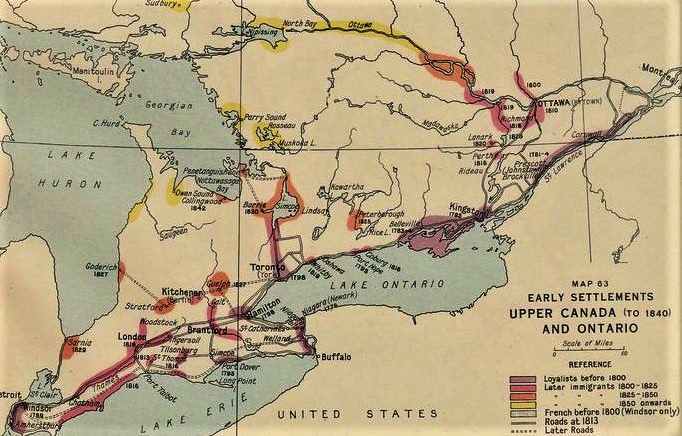
Effectively, the early Loyalists found themselves in the same position as their Colonial forefathers of some 150 years earlier; which brings to mind the words of Mr. D. W. Allison, a former MP for Lennox county, who in 1884 said,
“These men were not inconsiderate youths; they were men, most of them of mature years, and some advanced in life, who won for themselves comfortable independence in a country south of us. At what they conceived to be the call of duty, they were ready to sacrifice everything that men commonly hold dear; resign the wealth they had accumulated, forfeit their prospects — their own and their children’s — for sake of their loyalty to the flag under which they had served, and under which many of them had fought and bled. That was not an ordinary act, and men who performed it were cast in no ordinary mould . Nowadays it is far too common to judge a man’s acts by the standard of mere material success. These men had something nobler and loftier before them.”
While the Crown most certainly did its best to reciprocate their loyalty, and not simply in free grants of (untamed and largely inaccessible) land, but also in terms of essential tools and supplies, including a promise of three years of rations, these tools at times proved to be grossly inadequate, such as sending hatchets rather than proper tree-felling axes — not at all a small problem when you have land to clear and cabins to build! — while the promise of rations did not last much more than a year. This not only led to much suffering and starvation, but also to more than a few Loyalists packing it in and returning, at the earliest available opportunity, to the relative comfort and luxury of the United States.
While Kingston immediately had a mill up and running by 1784, it would not be until 1790, the year of James’ self-attested arrival in Thurlow, that Capt. Myers finally built the first grist mill in Thurlow; thus laying the first stone in the foundation of the future city of Belleville and sparing the local yeomen a grueling 40 mile overland trek to the mill at Napanee. The following year would see the first (official) Methodist saddle-bag ministers begin to ride their Kingston circuit, with the first Methodist meeting house in the Quinte Bay region, Adolphustown to be specific, being built by 1792, but it would still be a decade or more before the infrastructure of early 19th century civilization slowly began to catch up with the Loyalists. During this formidable time, many of the offspring of the Loyalists fell into illiteracy, as luxury was sacrificed for the demands of necessity, while church records from the early 19th century, show numerous individuals, and even entire families, coming forth to be baptized.
Nevertheless, by 1791, the Loyalists had gently brushed off the (largely) “benevolent dictatorships” of the military leaders that had guided them into their new lands and saw them safely through the hardships of the first years, in favour of men in whose position they themselves had some say, and asserted their English identity in the formation of Upper Canada (modern day Ontario), as a political entity quite distinct from the enduring and predominantly French nature of what was thence forth to be known as Lower Canada. By 1792, the District of Mecklenburg was renamed the Midland District, and the counties of Addington, Frontenac, Hastings, Lennox, Ontario, and Prince Edward were established within it.
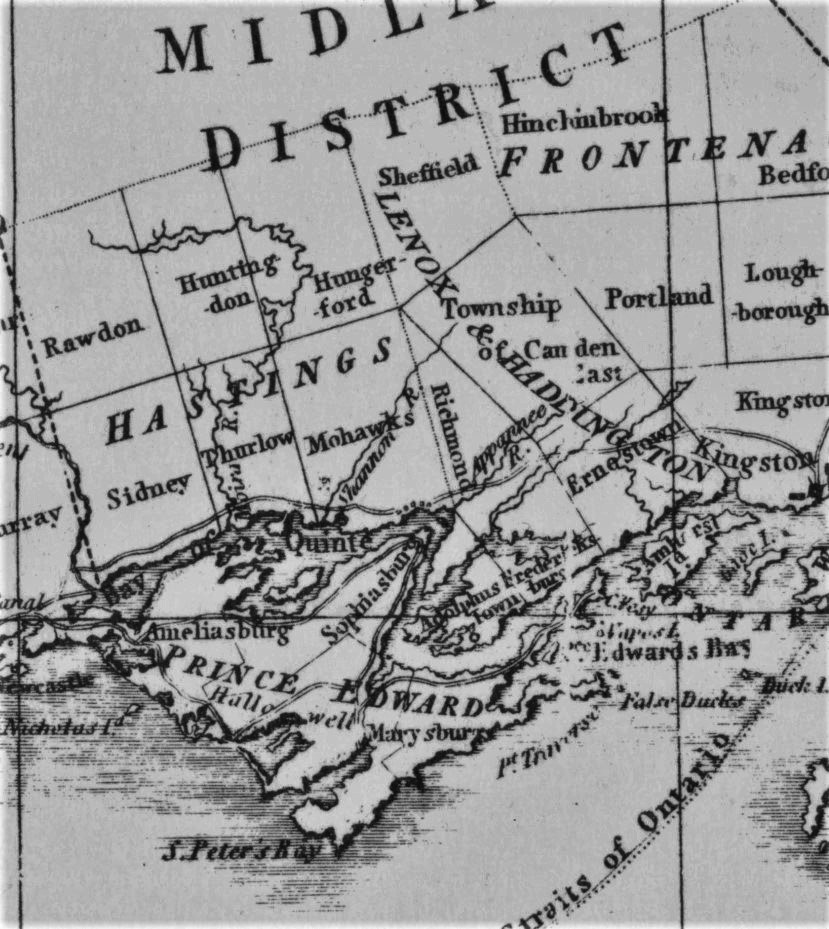
For all of that, by the outbreak of the War of 1812, no more than a dozen structures stood on the site of what would grow in to city of Belleville, and while a dirt road now ran the length from York to Kingston it is said to have been largely impassable for much of the year. The population of Belleville had yet to reach 150 people, the township of Thurlow as a whole could have been no greater than 1,500, while the entire Midland District had as yet to reach a population of 15,000. By way of contrast with Lower Canada, the population of the city of Montreal alone was at this time around 15,000.
The far off settlement of York, which would grow into the city of Toronto, had a population of less than 1,000 people in 1812, while Bytown, which would grow into the city of Ottawa had, maybe, half of that, with the total population of Upper Canada being no greater than 77,000. As for Kingston, its population stood at just over 2,000 and it had already resumed the importance as a strategic military position it had enjoyed under French occupation.
As for the War of 1812, James Martin’s name regularly appeared in the rolls for the Hastings County militia between the years of 1812 to 1814, but whatever state of readiness that news of the Battle of Crysler’s Farm or the capture and sacking of York, both in 1812, prompted in the men of Hastings county, the entire affair soon came to be regarded, and quite happily given their strong and enduring ties with their American brethren, as a non-starter that served no higher purpose than to keep them away from their homes, families, and work in the fields; thus resulting in a number of desertions, which were, nevertheless, met with due leniency on behalf of the Crown.
In all ways, James seems to have been a capable, contributing and respected yeoman of Thurlow, and his name has survived in five land transactions in the surviving records of this early epoch — most of which went missing with the outbreak of the Upper Canada Rebellion of 1837 and the desertion of a certain clerk who shall go unnamed — in the capacity of grantor, grantee, and witness, over the two year leading up to the birth of his son, my great-great-great grandfather, John Martin, in 1816.
The last appearance of James in the historical record comes in 1835, where he sells his property in Thurlow and is also named in the marriage record of John. However, by the time his wife, Mehitabel, made her own land petition in 1840 — her status as the immediate offspring a United Empire Loyalist entitled her to 200 acres — she was a widow.
Here it is interesting to note a couple of things. First, that Mehitabel made her 1840 land petition from the township of Tyendinaga (which neighbours Thurlow to the east), as this is where John’s eldest son, Thomas, was born in 1846; and in all likelihood also his daughter, Mehitabel (1847), and my own great-great grandfather, John Francis (1848). And second, that a James Martin is named as one of the pioneers of the township of Hungerford (which neighbours Tyendinaga to the north), which received its first wave of settlers, some 15 families, in 1826 to 1828. While there is no way of knowing if this was my James Martin, and with the scenario certainly begging us to wonder what the prospect of starting over — literally from the scratch of undeveloped, forested wilderness — might have looked like to a 57 year old man, it is nevertheless in Hungerford that we find John and each of his children no later than 1860.
And on a fairly decent plot of land at that!
Who knows, maybe James “chased” the frontier? Or at least enabled his son too? He certainly wouldn’t be the first of our kind to do so.
And indeed by the year 1860, civilization had come to at least the southern reaches of Hastings County and the Great Migration had all but ran its course. The first macadamized road, running from Napanee to Kingston was completed in 1839, to be followed by the Grand Trunk Railway in 1856, and in that time the population of Belleville swelled to 7,000, that of Kingston to 17,000, and all of Upper Canada to almost 1.4 million. Even Hungerford had grown from a population of 646 in 1839 to somewhere in the ballpark of 4,000 in 1860 and was now linked to Belleville via a gravel road.
As for James’ religion and ethnicity; while his son John was both baptized and then married as a Roman Catholic — on the same day, with the same witnesses and by the same priest — this conversion did not long outlive his wife, my great-great-great grandmother, Margaret Young; who died within a couple of years of my great-great grandfather’s birth. In the first census testimony, John’s religion is stated as Methodist, as per many of his fellow Loyalists in Mecklenburg. And as was the case with each of his descendants until my grandfather married a (French) Catholic woman and briefly brought Catholicism back into the family. I myself was baptized a Catholic as a baby. And yes, as a Anglo-Nordic Heathen, of course it shows! That said, we should not be too quick to jump to conclusions as to what their Christianity meant to them, or what it might look like to us if we could actually see it, growing as it did out of the culture of the 13 Colonies with its seers and astrologers and hexenmeisters — among which I can boast an ancestor or distant relative or two! — and a hearted willingness to concede that pagans, pagan Mohawks to be specific, could also be considered pious at the same time!
As for James’ ethnicity, while future census testimony dances back and forth between English and Irish, DNA testing, on both my half-sister and myself, shows a greater presence of English and Danish than it does of “Irish” (Gaelic), and so this might represent some conflation of facts, equally true, each in their own measure, akin to the Anglo-Norman heritage of Galway or the Anglo-Scottish heritage of Ulster.
And that about ties it up for this entry, so let me leave off with a quote that very much captures the sense of what I have drawn from a knowledge of my own Loyalist past, and as someone who can also boast an ancestor who was in fact a captain in the Continental Army and spent four years in a Canadian “dungeon”,
“what these men sought to prevent was a division which France sought to foster between the great portions of the English race. I believe the Loyalists, and the people of Canada who derive their inspiration from them, can best do justice to the spirit of their forefathers by doing what they can to bring together in a union all the English-speaking races in the world… if not under one Sovereign, at any rate in one alliance offensive and defensive...”
— Sir Richard Cartwright, 1884
Good day, eh!
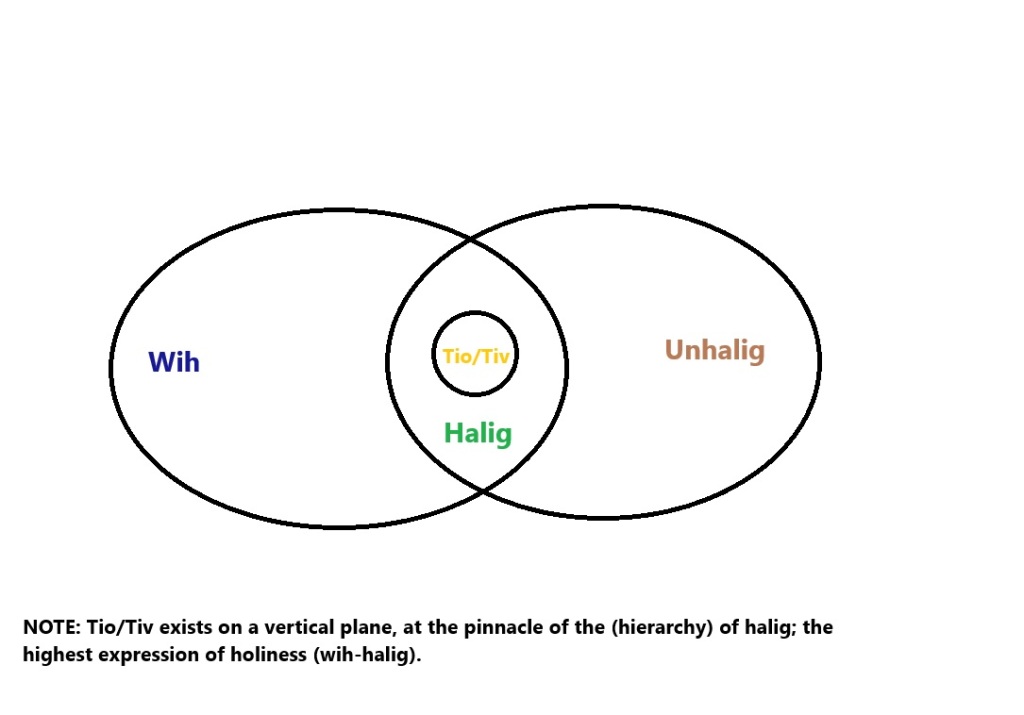

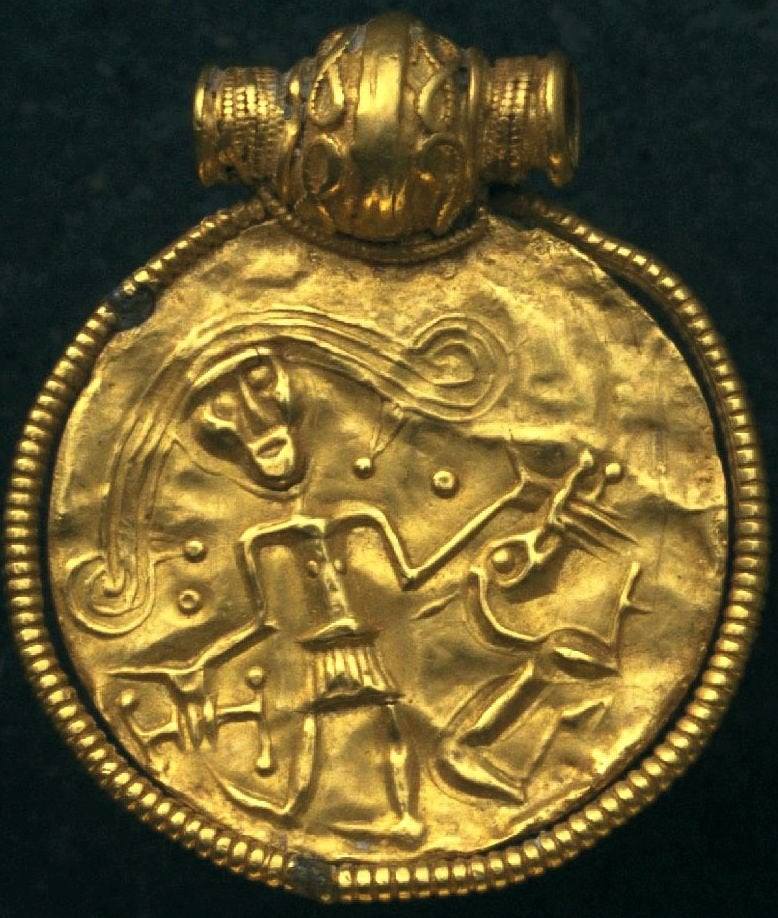
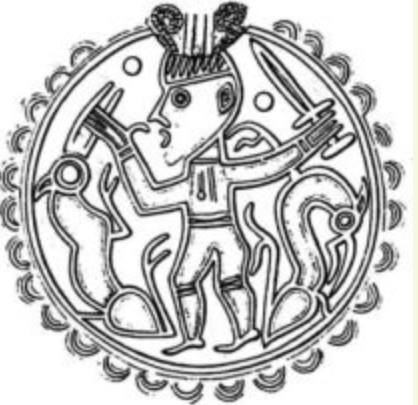
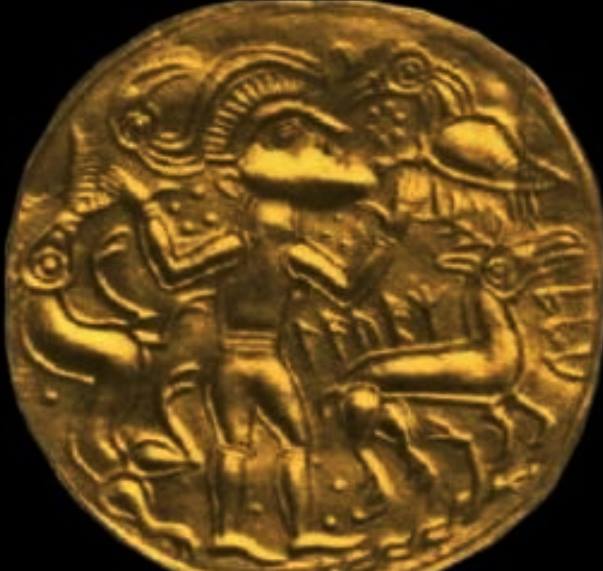
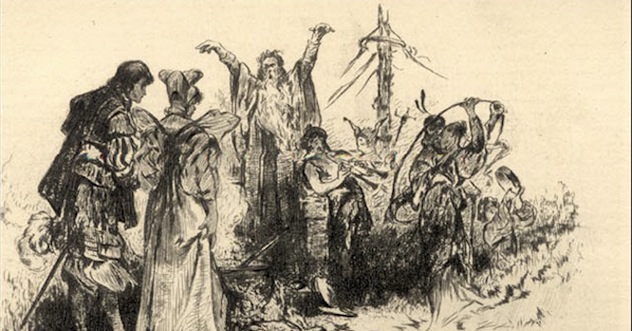
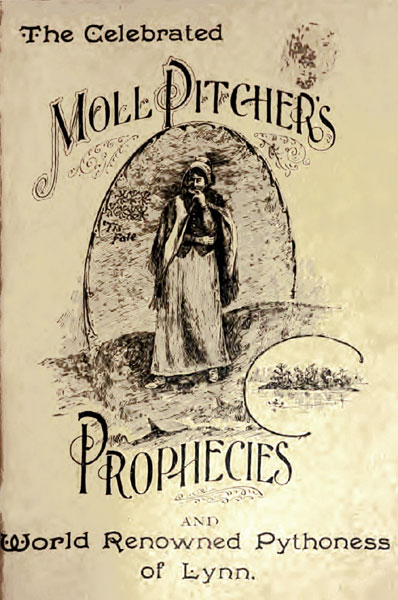
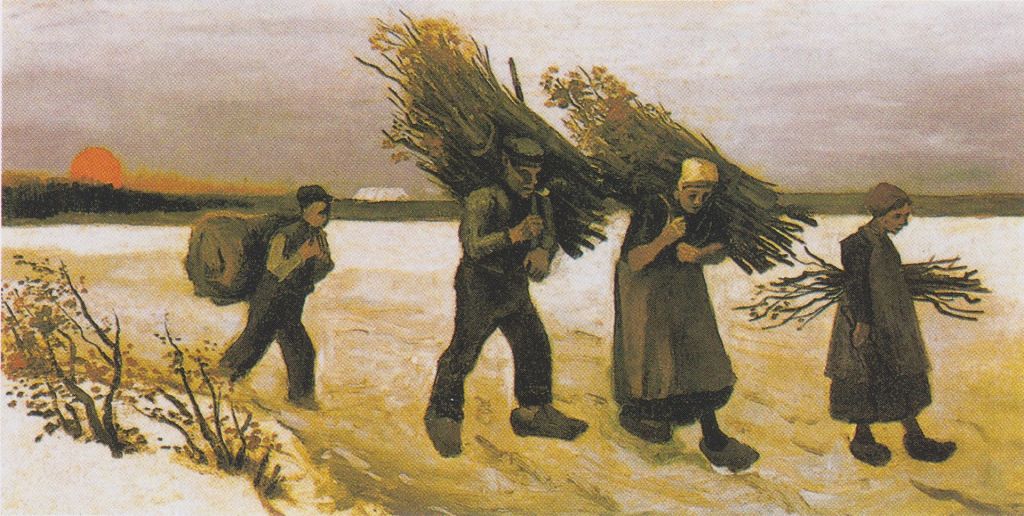

 Exactly what prompted James’ removal from Delaware — or wherever else he might have hailed from — to Thurlow is anyone’s best guess. The division between Loyalists and Patriots, all more or less of the same stock, with much the same cultural values, sensibilities, idiosyncrasies, and expectations, is often over-stated by politicians and their historians and teachers, and while gross abuses certainly took place, here and there, and were perpetrated on both sides, no sooner had the war ended then those whimsical ideological “divisions” melted away and the old familial and cultural bonds reasserted themselves. Bonds that continue to exist even into the present day, and are the reason why, despite wars (1812) and raids (Fenian), the Canadian-American border has still managed to remain the worlds longest unprotected border; though present circumstances are, and quite rightly, challenging the nature of that border.
Exactly what prompted James’ removal from Delaware — or wherever else he might have hailed from — to Thurlow is anyone’s best guess. The division between Loyalists and Patriots, all more or less of the same stock, with much the same cultural values, sensibilities, idiosyncrasies, and expectations, is often over-stated by politicians and their historians and teachers, and while gross abuses certainly took place, here and there, and were perpetrated on both sides, no sooner had the war ended then those whimsical ideological “divisions” melted away and the old familial and cultural bonds reasserted themselves. Bonds that continue to exist even into the present day, and are the reason why, despite wars (1812) and raids (Fenian), the Canadian-American border has still managed to remain the worlds longest unprotected border; though present circumstances are, and quite rightly, challenging the nature of that border.

